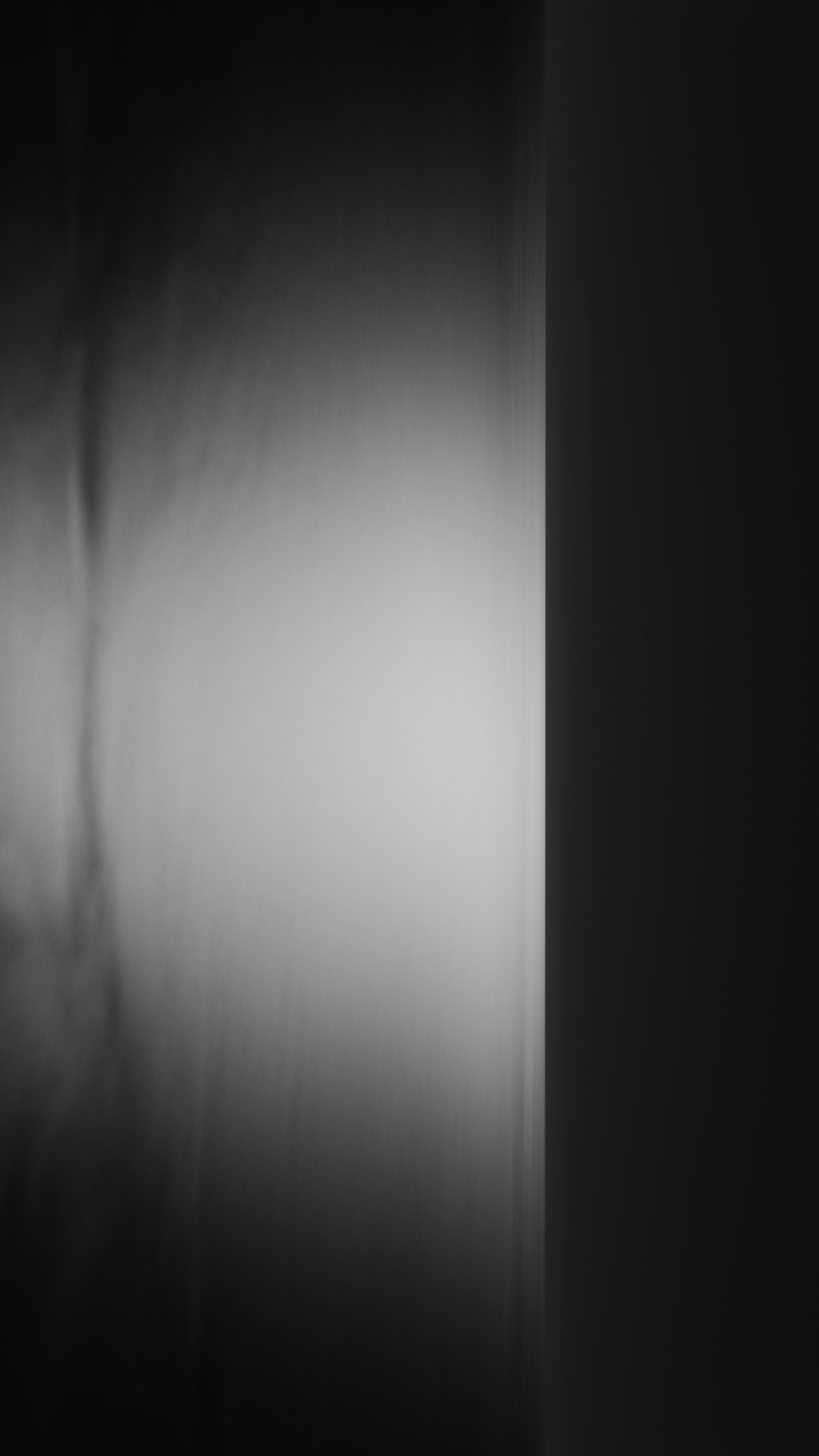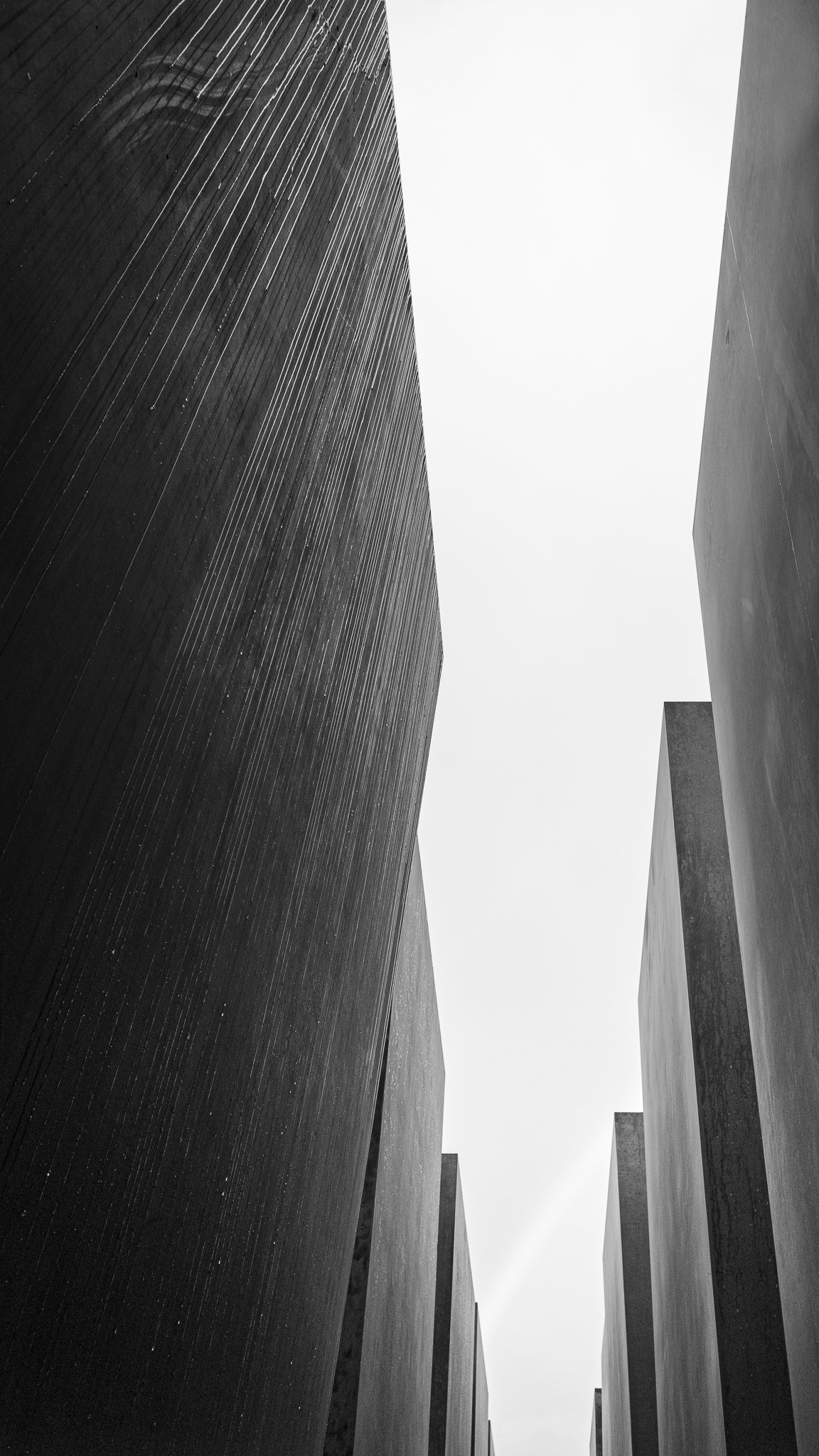The Long Read 3/3: Globalisation and Korean Photography
Radical Youth to Conservative Maturity
As the opportunities for photography in Korea evolved in the 1980s, new possibilities of using the medium as a means of expression meant that the photographer would be able to convey a more personal message about Korean culture to the ever maturing viewer. A progression from radical youth to a more conservative maturity would be familiar to Western readers in the career of Bill Brandt, in moving from documentarist to artist, or perhaps even in Don McCullin’s gaze towards his rural habitat, which is treated as a cathartic exercise to what he had experienced as a photojournalist. It is through this lens that we also see an increasingly inward and self-reflective approach with Korean photography towards its modernised society.
The desire to reexamine Korea’s indigenous roots is a continual exercise in Korean culture, but it is also reflective of a more universal mentality of youth versus maturity. We can see in early documentarists such as Joo Myungduck and Kwon Boomoon, a transition to landscape coincides with Korea’s opening up to global influences, creating new expectations and opportunities for photography as art. But although photography was becoming more progressive, the viewership was becoming older and would lean more towards a more socially conservative outlook. This is reflected in the methods of some photographic practitioners.
The curator Lee Chuyoung writes about Kwon Boomoon; “His works since the 1980s have gradually abandoned specific narratives and instead focused on the natural landscapes of mountains, fields and coastlines.” (Lee, 2014). Today he is mostly recognised for his series Naksan (see fig. 13.), which is a graphically composed sequence of waves and blizzards that confront the Naksan coastline. The series captures the variances of nature, with each image a reflection of the ebb and flow of tide and storm. Boomoon took a considered approach towards ‘straight photography’ more in keeping with the ‘purist’ direction of Group f/64 when photographing the landscape compared to his more expressive high-contrast documentary work.
Pictorially, he returns to the premise of True-View; and more in keeping with the Western tradition of documenting realistic views of nature. Rather than trying to translate Korean painting into photography, he prefers to look for abstract forms in- camera similar to the American photographer Minor White.
Boomoon’s photography has expanded beyond the landscape of Korea, photographing Arctic vistas in Scandinavia and Siberia. And in the last decade or so he has become increasingly prolific. Though it is through his three series of Naksan (2005, 2010 and 2014) that he has had most acclaim in Korea. Unlike global uniformity of Seascapes by Hiroshi Sugimoto, Boomoon’s works encounter several slight adjustments to the conditions from a fixed position. The foreground ‘void’ from the snow “...plays a critical role of liaising between the viewer and the image in the photograph while functioning as an empty space.” (Lee, 2014). In the centre of the frame, each image captures a unique wave from the sea. While the windswept snow is momentarily frozen in the sky. Boomoon states that ‘These are photographs for a quiet dialogue with oneself’. Once the camera is set-up, he wants to remove his gaze, the result in Naksan (2010) for example, is 33 identical compositions of an encounter. Since no image can ever be truly the same from one another, he leaves the viewer with an unfiltered sequence of moments. While technically proficient and pure, the contemplation of the nature of nature replaces the imperfect energy of youth and is more appeasing to a “conservative” aesthetic taste (Jung, 2014, p.28).
The series Lost Landscapes by Joo Myungduck is perhaps even more explicit in its intentions compared to his early career as a photojournalist. He regards his documentary years like many a documentarist in the West did, as having something to say on the role of photography and “...to improve in some small way, the society to which I belong.” (Joo, 1993). And yet his desire for change was later succeeded, perhaps with age, to a purpose of sharing his “...appreciation of Korea’s natural beauty and traditions, much of which they are losing.” (Joo, 1993) for posterity.
His subdued low-key tones which, through the prism of Ansel Adams’ zone system rarely make it out of the shadows and up to zone IV, contemplate a nondescript nature. In keeping with Boomoon’s Naksan and Jeong Seon’s True-View, they are images of a real place, recognisable mostly via their title (see fig. 14.). But ‘where’ is not of great significance to Joo’s landscapes. Returning to the East Asia tradition, what is of significance is atmosphere, reflection and emotion. There is no fear of this darkness, but a melancholy. Printed is the only way to see Lost Landscapes to understand the craft of successfully using such a limited tonal range. And to be drawn in to the particular beauty of shadows.
In the introduction to Lost Landscapes (1993), Joo quotes a Tang Dynasty Zen master from China saying “Gaining insight, one forgets words”. For a Western observer this could be seen as an opaqueness, yet it resonates with the sense of continual return to Korea’s traditional roots with its neighbours. A pause for self- reflection. Yet the medium itself; photography, being an invention of the West, used to convey East Asian philosophical thought is the epitome of cultural hybridity. As Junichiro Tanizaki states; “These machines are the inventions of Westerners and are, as we might expect, well suited to the Western arts.” (Tanizaki, 1933/2001, p.17). Korean photographers such as Joo have mastered the craft of photography and used it to communicate Korean cultural signs and symbols. But without inventing its own medium, we will never know if a technology initiated by the East would have “better suited” it its complexion, facial features, climate and land (Tanizaki, 1933/2001, p.16).
The self-reflection of Korean heritage extends beyond the early documentarists and also towards the first generation of photographic artists within the New Wave. For example, while much of Lee Jungjin’s photography is concentrated on the American West, she occasionally returns to her native land for inspiration and theory. She has used signs and signifiers such as Buddhist pagodas, statues and pine trees (see fig. 15.), albeit in a much more conceptual way. There is a greater sense of continual dialogue between East and West that is representative in her series Wind (2009), which combines images of both American and Korean landscapes and is reflective of Amelia Nelson’s view, stating: “While Jungjin Lee’s photographs are clearly influenced by Asian landscape painting, they are also deeply informed by modern and contemporary trends in Western photography.” (Nelson, 2016, p.18). This consistency in Lee’s work is reflected in her unique hybrid process of analogue and digital. The melancholy present, regardless of location is the central theme and as a result is more openly global.
By contrast, Kim Daesoo (b. 1955), like Lee, also studied in New York and perhaps produced the most radical work, for Korean photography at least of the time during the 1980s, and yet his more recent work has also sought to connect with a regional signifier, bamboo (see fig. 16.) and reject the notion of any Western influence. Much like the venerated pine tree, nature again becomes the symbol of both national and regional identity (together with China and Japan). Bamboo belongs to what Kim Youngkee describes as the “Four Scholars”, together with plum trees, orchids and chrysanthemums (Kim, 2009, p.8). Much like Bae Bien-U, Kim’s intention here is to translate the connotations of the philosophical spirit into ‘straight photography’.
Fig. 16. road to the sky - bmb1999119 (1999)
Despite there being an understanding of Gestalt laws of perception14, he pains to diverge from this stating its limitation as “...being unable to explain disparities between individual entities.” (Kim, 2009, p.6). However the survey Colors of the Bamboo (Kim, 2009) is a culmination of 10 years photographing bamboo in a variety of scales and seasons is much more comprehensive and struggles to differentiate between the uniqueness of the individual entity and bamboo as a collective. It is possible that he sees the spirit of bamboo holistically, but in having an awareness of Gestalt laws, much like Lee Ufan’s rejection of modernism, the global is still an influence here because there is a desire to distance Kim’s work from another school of thought that is known, even if it is ultimately rejected. It is also possible that the connotations of Kim’s images be perceived differently depending on the origins of the viewer. Where perhaps Gestalt laws are more widely utilised.
His contribution to contemporary Korean photography comes in some fascinating forms. Like so many of his peers from the 1980s, Kim belongs to the first generation of artists who travelled abroad. He spent much of this time in New York developing his New Wave series (see fig. 17.). There are traces of dadaism and surrealism with his use of collage, religious symbols and nudes. While the prints are expressed-upon with black marks and etched lines.
Fig. 17. In the Beginning, From beginning - nbf1990026 (1990)
On first impression it is hard to believe it is the same artist. While his bamboo photographs could be described as mature and approaching technical perfection; his New Wave works are full of youth, angst, rebelliousness and eroticism. They appear to be a product of self-discovery from a young man in a state of curiosity. The series New Wave carries a contemporary relevance unlike his bamboo studies. This early work is some of the first to embrace a more broader globalised expression of performance and concept into Korean photography. What is important to recognise from these contrasting works in Kim’s career is that the global is continually present, even in its rejection.
We have seen that individuals within the New Wave have purposely embraced the use of photography as a means of expression and a process of making, and in doing so produced a wave of cultural proliferation which is reinforced by the local art market that carries both an embrace, and a rejection of global influence.
In using a Western invention, the camera to represent local culture, at its most basic, Korean photography from the New Wave is already an example of cultural hybridity. But furthermore, through an opening of Korean society and “...the experience of accelerated growth and modernisation...”, the photographers of the New Wave were able to compare and contrast, embrace and reject, Western photographic history in many creative and dynamic ways (Park, 2016, p.17).
The power of the global is that indigenous cultures are no longer pure, but they are “reinforced” by their interaction with another (Tomlinson, 2003). Therefore it can also be proposed, that by exploring key periods of Korean art history, the idea of ‘Koreanness’ as a leader in cultural hybridity is not a recent phenomenon, but a returning theme in its cultural development to fuse its regional roots with the wider world.
While at times Korean political history has displaced it from the dominant Western timeline of art, this essay has aimed to show how the national identity of Korean photography has been enhanced by globalisation. We can see in the work of Lee Jungjin in particular, the strongest example of cultural hybridity that resonates with previous examples of Korean arts distinguishing feature; to be both local and global. While in more conservative work such as Bae Bien-U and Kim Daesoo, the presentation of cultural signifiers has been influenced, whether by embrace or rejection, of Western compositional thought.
The photographers of the New Wave were able, much like predecessors and peers such as Jeong Seon and Lee Ufan, to reconnect with and enhance Korean art because of globalisation rather than being culturally conservative, and perhaps it could benefit from being reframed as a leader in hybridity with a track record in cultural exchange.
References
Bae, Bien-U (2009) Sacred Wood. Germany: Hatje Cantz Verlag.
Bae, Bien-U (2012) Windscape. Germany: Hatje Cantz Verlag.
Byun, W (2009) ‘A Pine Tree Telling Us about "the Pine Tree"’. In: Bae, Bien-U Sacred Wood. Germany: Hatje Cantz Verlag. pp 7-10
Joo, Myungduck (1993) Lost Landscapes. Kyoto: Kyoto Shoin ARM.
Jung, J (2014) Cultivating a Future for the Korean Contemporary Art Market: Modernization and Expansion [M.A. Thesis] Sotheby’s Institute of Art
Kee, J (2008) ‘Points, Lines, Encounters: The World According to Lee Ufan’. In: Oxford Art Journal, 31(3), pp 405-424
Kee, J (2011) ‘Lee Ufan: Marking Infinity’. In: Artforum International, 49(9), pp132+
Kepes, G (1944/2012) Language of Vision. USA: Literary Licensing, LLC.
Kim, Y (2009) ‘What Daesoo Kim's Photographs Tell us’. In: Kim, Daesoo Colors of the Bamboo. Seoul: Da Vinci. pp 6-9
Lee, Jungjin (2009) Wind. New York: Aperture.
Lee, C (2014) Korean Beauty: Two Kinds of Nature. Seoul: National Museum of Modern and Contemporary Art
Lee, M (2015) ‘Joo Myung Duck: Motherland” at the Miyako Yoshinaga Gallery
in Chelsea’ In: ICP-Bard MFA Blog [online} At: https://icpbardmfa.wordpress.com/ 2015/04/05/joo-myung-duck-motherland-at-the-miyako-yoshinaga-gallery-in-chelsea/
Lee, J (2016) Public to Private: Photography in Korean Art since 1989. Seoul: National Museum of Modern and Contemporary Art
Lee-Kalisch, J (2012) ‘The Silent Melody in the Wind’. In: Bae, Bien-U Windscape. Germany: Hatje Cantz Verlag. pp 7-12
Lee Ufan: Marking Infinity (excerpt) [interview online] Michael Blackwood (2012) 3 mins At: https://www.youtube.com/watch?v=E1qZflfKiN0
McCullin. (2012) Directed by David Morris & Jacqui Morris [DVD] UK: British Film Company.
Morley, S (2013) ‘Dansaekhwa’. In: Third Text, 25(5), pp 189-207
MoMA (no date) The Family of Man. Available at: https://www.moma.org/calendar/exhibitions/2429
Nelson, A (2016) Contemporary Landscape Photography: Dissolving Boundaries in Jungjin Lee’s Wind Series [M.A. Thesis] University of Missouri-Kansas City
Park, Y (2016) ‘Contemporary Korean Art’. In: Korea Magazine 2016 (06), pp 8-17
Rennen, W & Martens, P (2003) ‘The Globalisation Timeline’. In: Integrated Assessment Vol. 4 (3), pp 137–144
Tanizaki, J (1933/2001) In Praise of Shadows. London: Vintage.
Tomlinson, J (2003) ‘The Agenda of Globalisation’. In: New Formations, (50), pp 10-21
Trouveroy, N (2003) ‘Landscape of the Soul: Ethics and Spirituality in Chinese Painting’. In: India International Centre Quarterly 30 (1), pp 5-19
Wagner, T (2009) ‘A Temple of Decrepitude’. In: Bae, Bien-U Sacred Wood. Germany: Hatje Cantz Verlag. pp 13-19






